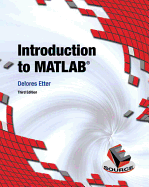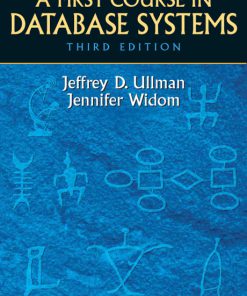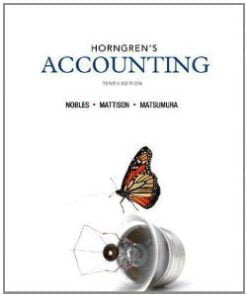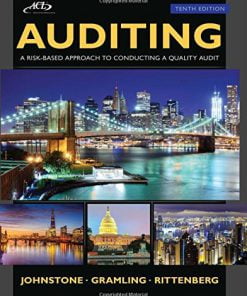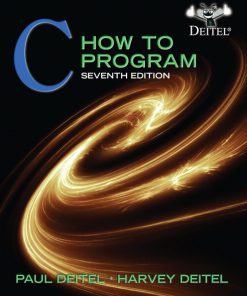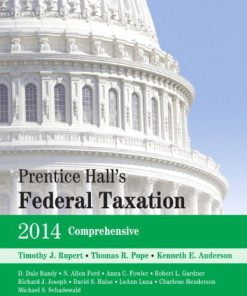Solution Manual for Intro Stats 5th Edition Richard D. De Veaux
$35.00 Original price was: $35.00.$26.50Current price is: $26.50.
Solution Manual for Intro Stats, 5th Edition, Richard D. De Veaux
Instant download Solution Manual for Intro Stats, 5th Edition, Richard D. De Veaux pdf docx epub after payment.

Product details:
- Language : English
- ISBN-10 : 0134210220
- Product Dimensions : 1.3 x 8.7 x 10.9 inches; 3.84 Pounds
- Publication date : August 25, 2017
- Publisher : Pearson; 5 edition
- ISBN-13 : 978-0134210223
- Release date : August 25, 2017
Table of contents:
PART I: EXPLORING AND UNDERSTANDING DATA
1. Stats Starts here
1.1 What Is Statistics?
1.2. Data
1.3 Variables
1.4 Models
2.1 Summarizing and Displaying a Categorical Variable
2.2 Displaying a Quantitative variable
2.3 Shape
2.4 Center
2.5 Spread
3.1 Contingency tables
3.2 Conditional distributions
3.3 Displaying Contingency Tables
3.4 Three Categorical Variables
4.1 Displays for Comparing Groups
4.2 Outliers
4.3 Re-Expressing Data: A First Look
5.1 Using the standard deviation to Standardize Values
5.2 Shifting and scaling
5.3 Normal models
5.4 Working with Normal Percentiles
5.5 Normal Probability PlotsPart I Review
PART II: EXPLORING RELATIONSHIPS BETWEEN VARIABLES
6. Scatterplots, Association, and Correlation
6.1 Scatterplots
6.2 Correlation
6.3 Warning: Correlation ≠ Causation
6.4 *Straightening Scatterplots
7.1 Least Squares: The Line of “Best Fit”
7.2 The Linear model
7.3 Finding the least squares line
7.4 Regression to the Mean
7.5 Examining the Residuals
7.6 R2–The Variation Accounted for by the Model
7.7 Regression Assumptions and Conditions
8.1 Examining Residuals
8.2 Extrapolation: Reaching Beyond the Data
8.3 Outliers, Leverage, and Influence
8.4 Lurking Variables and Causation
8.5 Working with Summary Values
8.6 * Straightening Scatterplots–The Three Goals
8.7 * Finding a Good Re-Expression
9.1 What Is Multiple Regression?
9.2 Interpreting Multiple Regression Coefficients
9.3 The Multiple Regression Model–Assumptions and Conditions
9.4 Partial Regression Plots
9.5 Indicator VariablesPart II Review
PART III: GATHERING DATA
10. Sample Surveys
10.1 The Three Big Ideas of Sampling
10.2 Populations and Parameters
10.3 Simple Random Samples
10.4 Other Sampling Designs
10.5 From the Population to the Sample: You Can’t Always Get What You Want
10.6 The valid survey
10.7 Common Sampling Mistakes, or How to Sample Badly
11.1 Observational Studies
11.2 Randomized, Comparative Experiments
11.3 The Four Principles of Experiment Design
11.4 Control Groups
11.5 Blocking
11.6 ConfoundingPart III Review
PART IV INFERENCE FOR ONE PARAMETER
12. From Randomness to Probability
12.1 Random phenomena
12.2 Modeling Probability
12.3 Formal Probability
12.4. Conditional Probability and the General Multiplication Rule
12.5 Independence
12.6 Picturing Probability: Tables, Venn Diagrams, and Trees
12.7 *Reversing the Conditioning: Bayes’ Rule
13.1 The Sampling Distribution for a Proportion
13.2 When Does the Normal Model Work? Assumptions and Conditions
13.3 A Confidence Interval for a Proportion
13.4 Interpreting Confidence Intervals: What Does 95% Confidence Really Mean?
13.5 Margin of Error: Certainty vs. Precision
13.6 *Choosing your Sample Size
14.1 The Central Limit Theorem
14.2 A Confidence interval for the Mean
14.3 Interpreting confidence intervals
14.4 *Picking our Interval up by our Bootstraps
14.5 Thoughts about Confidence Intervals
15.1 Hypotheses
15.2 P-values
15.3 The Reasoning of Hypothesis Testing
15.4 A Hypothesis Test for the Mean
15.5 Intervals and Tests
15.6 P-Values and Decisions: What to Tell About a Hypothesis Test
16.1 Interpreting P-values
16.2 Alpha Levels and Critical Values
16.3 Practical vs Statistical Significance
16.4 ErrorsPart IV Review
PART V: INFERENCE FOR RELATIONSHIPS
17. Comparing Groups
17.1 A Confidence Interval for the Difference Between Two Proportions
17.2 Assumptions and Conditions for Comparing Proportions
17.3 The Two-Sample z-Test: Testing the Difference Between Proportions
17.4 A Confidence Interval for the Difference Between Two Means
17.5 The Two-Sample t-Test: Testing for the Difference Between Two Means
17.6 Randomization-Based Tests and Confidence Intervals for Two Means
17.7 *Pooling
17.8 *The Standard Deviation of a Difference
18.1 Paired Data
18.2 Assumptions and Conditions
18.3 Confidence Intervals for Matched Pairs
18.4 Blocking
19.2 Chi-Square Tests of Homogeneity
19.3 Examining the Residuals
19.4 Chi-Square Test of Independence
20.1 The Regression Model
20.2 Assumptions and Conditions
20.3 Regression Inference and Intuition
20.4 The Regression Table
20.5 Multiple Regression Inference
20.6 Confidence and Prediction Intervals
20.7 *Logistic RegressionPart V Review
* Indicates optional section
People also search:
Intro Stats, 5th Edition
Intro Stats, 5th Edition pdf
Intro Stats
|
a survey conducted in a college intro stats
|
intro stats normal distribution calculations
introduction statistics and probability
Related products
Solution Manual
Solution Manual
Auditing A Risk Based-Approach to Conducting a Quality Audit Johnstone 10th Edition Solutions Manual
Solution Manual
Prentice Hall’s Federal Taxation 2014 Comprehensive Rupert 27th Edition Solutions Manual
Solution Manual
Solution Manual for Introduction to Electrodynamics, 4/E 4th





